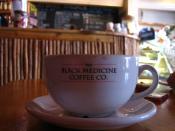Background
The Medicines Company's business model is to acquire or lease products in the development stage from leading pharmaceutical companies. Essentially, they will acquire or lease drugs that have been abandoned or shelved due to lack of early stage research results. The company's success lays on their being able to save "rejected" compounds, receive FDA approval for their use, and still turn a profit. This case study provides a look at the first few years of this start-up company, from the initial review of abandoned drugs to the release of their first drug Angiomax.
Angiomax is a direct competitor to Heparin, the leading anticoagulant used in the market. The company continued research on this drug, which was licensed from Biogen in 1997, and received approval for marketing in 2001 for use in coronary angioplasty procedures. The company continued working towards approval for the use of Angi0max in treating arterial thrombosis and other related conditions.
Problems
Analysis of the Medicines Company case revealed several critical aspects that need to be addressed. The pharmaceutical industry can be very profitable, but is also very risky. As described in the case, bringing a new drug to market is a costly and lengthy process requiring an average of 10 years. Big Pharmaceutical companies struggle to keep upcoming drugs in their pipeline to provide revenue when existing drugs come off patent and are replaced by generic compounds. With 1 in 4000 compounds making it to market, there is significant risk of failure that can be reduced by having many compounds in development. Additionally, a drug company's reputation can easily be tarnished by safety issues with a compound, dramatically affecting their sales.
Large pharmaceutical companies tend to focus on blockbuster drugs to gain more profits so there may be compounds that are discarded because they...


